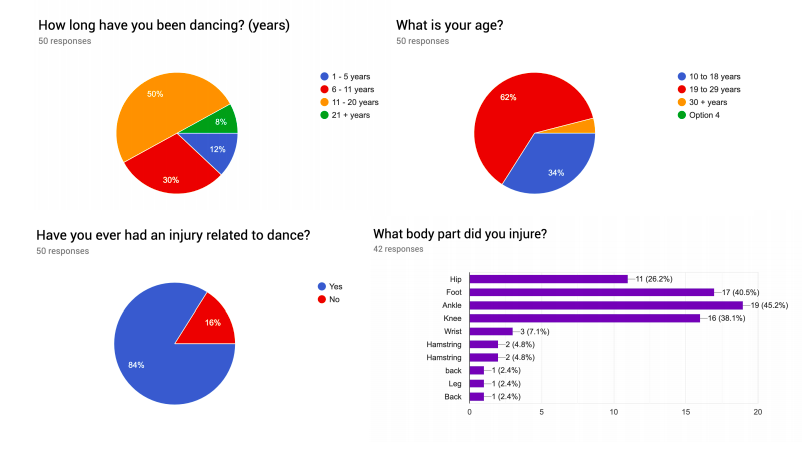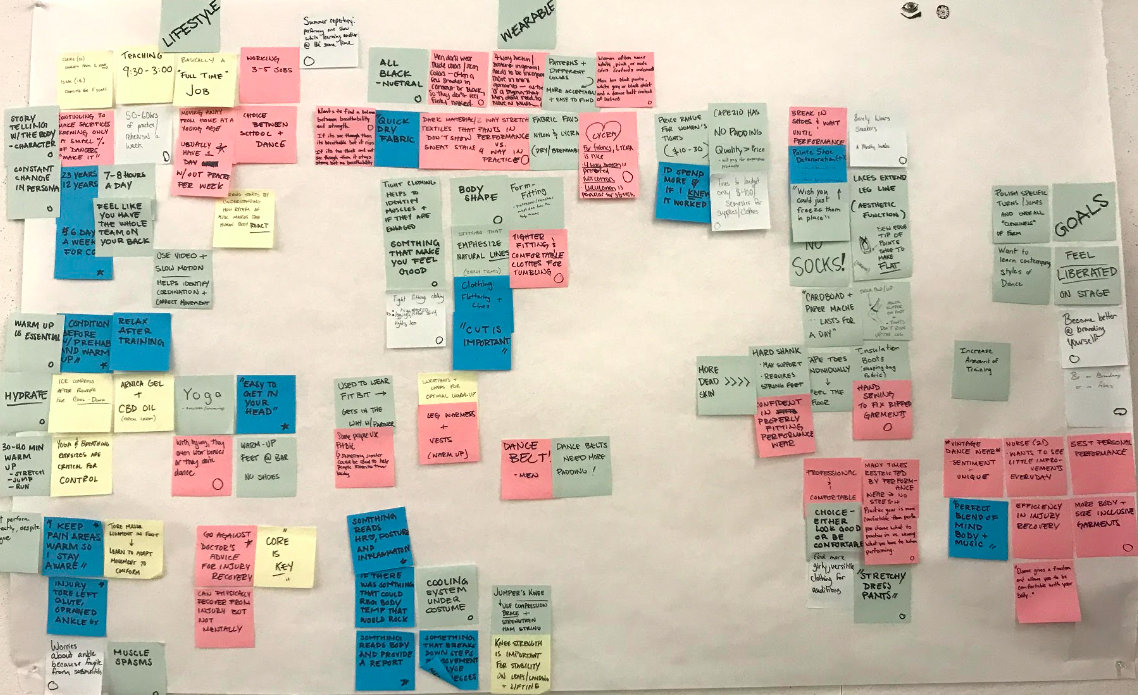The following table displays some of the important feedback we obtained from our team- led survey.
To begin accumulating data, we created a Google form to get quick responses to set questions oriented to resolve some of the most pertinent questions. These questions entailed individuals' age, dance experience, injuries, recovery times, favorite dance garments, needs, and pain points of current wearables. The Google form made it easy to organize this information into a chart and diagram which highlighted the areas of focus. As a team, we decided that the best way to structure the form was to organize the questions from general to specific, (for example, "How long have you been dancing?", "How long did it take to recover from a dance-related injury?").
The form received 50 responses, giving us access to an immediate data set with quantifiable information beneficial to our product research and design. The interview questions were structured similarly but allowed room for free-form discussion. Knowing that the time we had one-on-one time with the dancers was valuable, we broke up the interview questions into sections related to broad topics, (Dancer Background, Wearables, Goals). Each pairing of our team was assigned to a dancer or set of dancers, and the would focus most of the questioning on their specific section to ensure all topics were covered in depth. What we found in practice was that the interview process guided itself using natural dialog. We altered the and interview questions slightly to be more specific for the Syracuse University Theater students and Syracuse Ballet dancers.
This map charts responses from individual and group interviews with Syracuse University Theater and Ballet dancers.


